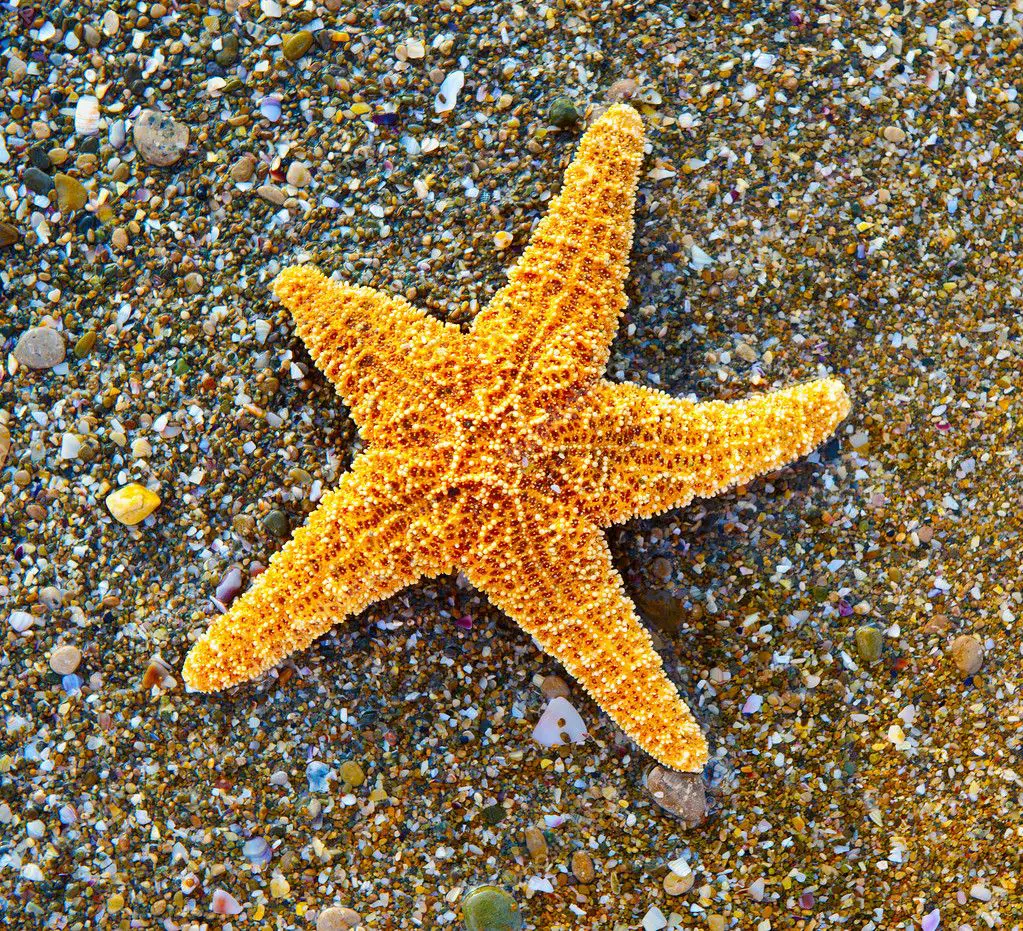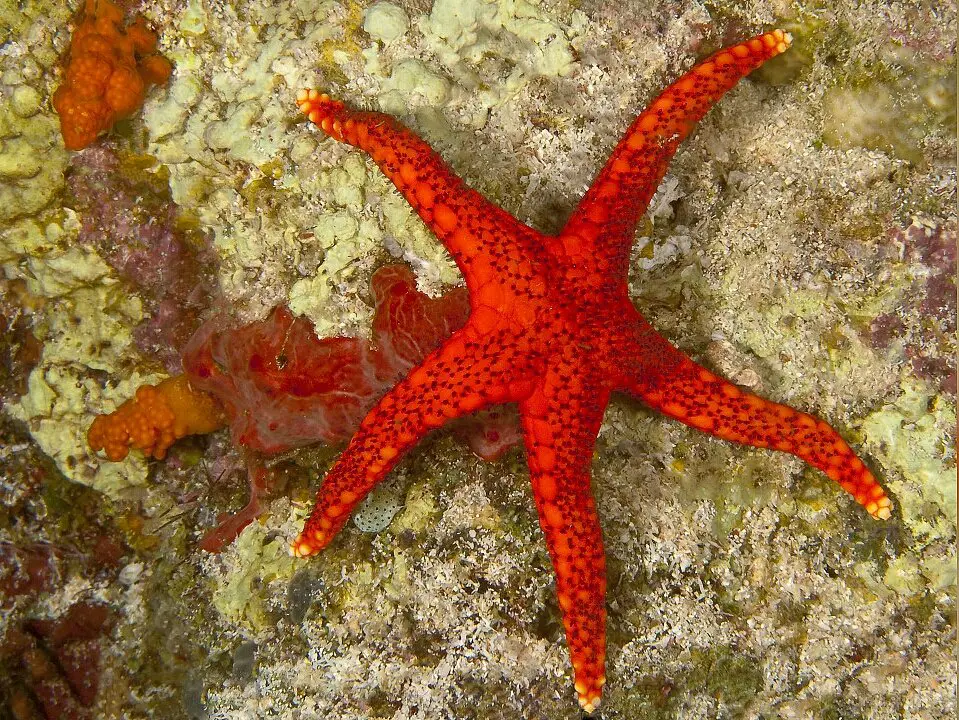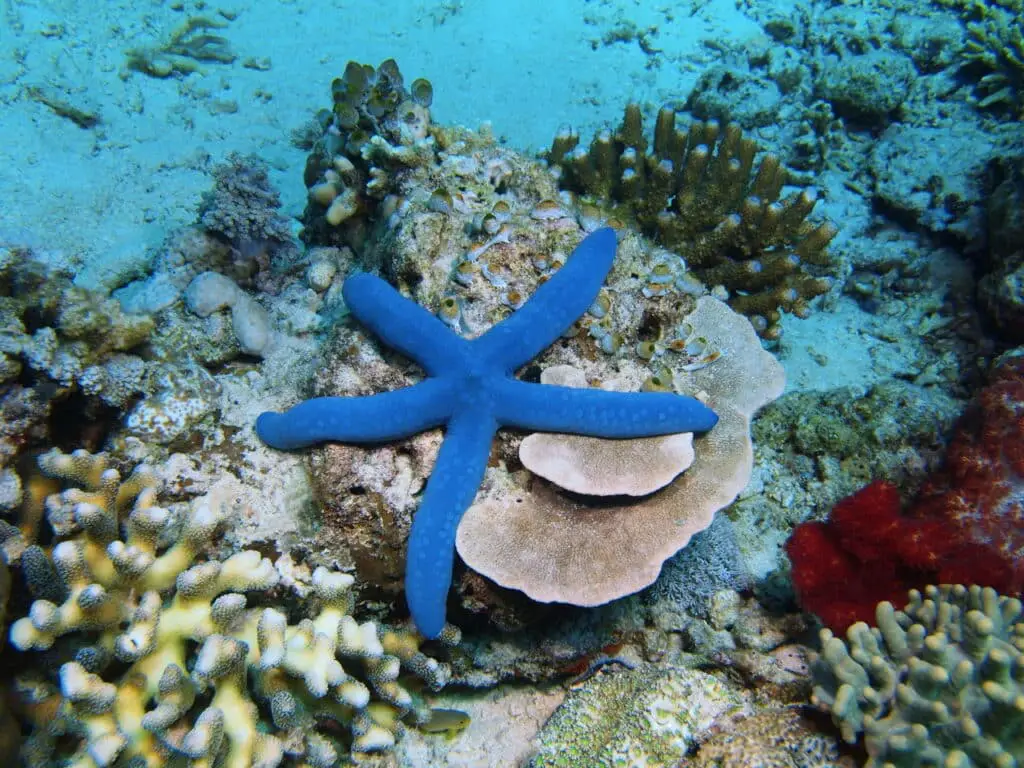Do Starfish Bite

Introduction
Do Starfish Bite: Beneath the azure depths of the world’s oceans resides an array of creatures, each with its unique set of mysteries and enigmas. Among these captivating marine denizens are starfish, also known as sea stars, renowned for their mesmerizing appearance and remarkable abilities. Yet, as with many things in the natural world, myths and questions often arise, and one such query stands out: Do starfish bite?
Our journey into the underwater realm of starfish delves into this curious question, seeking to dispel misconceptions and uncover the truths behind the intriguing world of these echinoderms. To answer this question, we must first understand the anatomy and feeding mechanisms of starfish, which are crucial to dispelling the myth of starfish bites.
As we dive deeper into this exploration, we’ll reveal the intriguing methods starfish employ to capture and consume their prey. Their feeding process is a testament to the wonders of marine adaptation and showcases their unique approach to nourishment.
Moreover, our quest extends beyond biology, delving into the ecological significance of starfish in marine ecosystems. Understanding how they interact with their prey and the role they play in the delicate balance of ocean food webs will shed light on their place in the underwater world.
Join us as we embark on a journey to separate fact from fiction, unraveling the mysteries surrounding starfish and the age-old question: Do starfish bite? In doing so, we’ll gain a deeper appreciation for these captivating creatures and the intricate web of life that thrives beneath the waves.

What happens if a starfish bites you?
Some people worry about getting stung by a starfish, but the answer is no: Starfish aren’t poisonous and you’re unlikely to get any sort of serious injury.
A starfish cannot bite you in the conventional sense because they lack the necessary anatomical features like teeth or jaws for biting. Starfish primarily feed on small marine invertebrates by using their tube feet and a unique feeding mechanism that involves extending their stomachs to digest their prey externally. They are not aggressive or predatory toward humans.
However, some species of starfish may have small spines or tiny pincer-like structures called pedicellariae on their body surfaces. While these structures are not designed for biting, they can cause minor injuries or skin irritation if you handle starfish without care. Therefore, it’s advisable to pick up and handle starfish gently and avoid touching the spines or other potentially sharp areas.
Is it OK to pick up a starfish?
The answer is simple: starfish die when they are taken out of the water. Since starfish cannot stay in the water and breathe, they suffer from carbon monoxide poisoning, which causes them to die from asphyxiation. Another common cause of death is stress from handling them too much.
It is generally okay to pick up a starfish, but it should be done with care and respect for the animal and its environment. Here are some guidelines for safely picking up a starfish:
Handle gently: Lift the starfish gently and avoid squeezing or applying excessive pressure, especially around the arms and body.
Avoid touching spines: Be cautious of any spines or pedicellariae on the starfish’s surface, as these can cause minor injuries or irritation.
Wet your hands: Wetting your hands before handling a starfish can help reduce the risk of damaging its delicate skin.
Return to the water: If you pick up a starfish, be sure to return it to the water promptly. Starfish are marine animals, and prolonged exposure to air can be harmful to them.
Observe local regulations: In some areas, it may be illegal or discouraged to handle or collect marine life, including starfish. Always follow local regulations and guidelines for responsible wildlife interaction.
Are starfish safe to touch?
“Simply put, starfish absorb oxygen from water through channels on their outer body. You should never touch or remove a starfish from the water, as this could lead to them suffocating. “Sunscreen or the oil on our skin can harm sea creatures which is another reason not to touch them.”
Starfish are generally safe to touch, but it’s essential to exercise caution and handle them with care. While they do not pose a threat to humans in terms of biting or attacking, some species may have spines or pedicellariae that can cause minor injuries or skin irritation if touched or mishandled.
When touching a starfish, follow the guidelines mentioned earlier: handle them gently, avoid touching spines or sharp areas, wet your hands if possible, and return them to the water promptly after observation. By treating starfish with respect and care, you can safely enjoy the experience of interacting with these fascinating marine creatures.
Can a starfish hurt a person?
Starfish Sting
Starfish do not attack humans, but can inflict painful stings with the release of venom, when they are accidently stepped upon or handled (picked up).
In general, starfish do not pose a significant threat to humans. They are not aggressive animals, and their primary focus is on feeding on small marine invertebrates and carrion. However, as mentioned earlier, some species of starfish may have spines or pedicellariae on their body surfaces that can cause minor injuries or skin irritation if touched or mishandled.
To avoid any potential harm while handling or observing starfish, it’s advisable to exercise caution, handle them gently, and be mindful of any spines or sharp areas. Additionally, returning starfish to the water promptly after observation is essential to ensure their well-being, as prolonged exposure to air can be harmful to these marine animals.
Which starfish are poisonous?
Are starfish poisonous? Most starfish are not poisonous, and since they can’t bite or sting us, they pose no threat to humans. However, there’s a species called the crown-of-thorns starfish which is venomous, and if their spines pierce the skin they can be venomous.
While many species of starfish are not considered poisonous or harmful to humans, there are a few exceptions. One notable example is the Crown of Thorns Starfish (Acanthaster planci). This species is known to be venomous and poses a threat to coral reefs. It has spines that contain a toxic substance that can cause skin irritation and discomfort if touched.
In some cases, starfish can accumulate toxins from their prey, such as toxic sponges or other marine organisms. Consuming these starfish or coming into contact with them can be harmful to humans.
It’s important to note that the vast majority of starfish are not poisonous and are harmless to humans. However, when interacting with starfish or other marine life, it’s essential to exercise caution and avoid handling species that are known to be venomous or toxic.
Do starfish have teeth?
ALTHOUGH SEA STARS ARE OFTEN REFERRED TO AS STARFISH, THEY’RE NOT RELATED TO FISH AT ALL! A sea star’s mouth, which is on the underside of its body, has no teeth. When feeding, sea stars wrap their arms around their prey and then push their stomachs out of their mouths to consume their food.
Starfish do not have teeth like mammals or some other animals. Instead, they have a unique feeding mechanism adapted to their diet of small marine invertebrates and carrion. Starfish use their tube feet and a specialized feeding process to capture and consume their prey.
When a starfish encounters its prey, it uses its tube feet to hold onto the prey’s shell or exoskeleton. It then everts its stomach out through its mouth and into the gap between the prey’s shells. Digestive enzymes are released into this space, breaking down the prey’s tissues. The liquefied nutrients are then absorbed by the starfish.
This feeding method does not involve biting or chewing with teeth; instead, it allows starfish to digest their prey externally and absorb the nutrients directly.
Can you have a starfish as a pet?
Are starfish easy to keep? Starfish are recommended for experienced aquarists due to their specialized needs and requirement of excellent water quality. Starfish are sensitive to water parameter changes and should be drip acclimated to allow for slow adjustment into a new aquarium.
In some cases, it is possible to have a starfish as a pet, but there are several important considerations to keep in mind:
Marine aquarium: Starfish are marine animals and require a saltwater aquarium with specific water quality parameters, including temperature, salinity, and pH levels, to thrive. Setting up and maintaining a marine aquarium can be complex and expensive.
Habitat: Different species of starfish have different habitat requirements. Research the specific needs of the species you are interested in to ensure you can provide a suitable environment.
Feeding: Starfish have specialized dietary requirements, often feeding on live or frozen marine invertebrates. Feeding them can be challenging and may require access to a variety of marine foods.
Space: Starfish can vary in size, and some species can grow quite large. Ensure you have an appropriately sized aquarium to accommodate the starfish’s growth.
Compatibility: Consider the compatibility of starfish with other species in your aquarium, as some starfish may prey on certain types of corals or other marine life.
Before acquiring a starfish as a pet, it’s essential to research their specific care requirements thoroughly and be prepared for the responsibilities associated with maintaining a marine aquarium.
Can starfish be eaten?
Since starfish is edible and safe to consume, it has become a popular component of street food cuisine in places like China, Indonesia, and Thailand. However, certain species are highly poisonous and dangerous for consumption, such as the crown-of-thorn starfish.
Yes, in some cultures, certain species of starfish are consumed as a delicacy. However, it’s important to note that eating starfish is not common worldwide, and it is not a widespread or widely practiced culinary tradition.
It’s essential to exercise caution when considering the consumption of starfish for several reasons:
Edibility: Not all species of starfish are edible, and some can be harmful if consumed due to potential toxins or contaminants. The safety of eating a particular species of starfish should be thoroughly researched and confirmed.
Ecological Impact: Harvesting starfish for consumption can have negative ecological impacts on marine ecosystems. Starfish play essential roles in marine food webs, and removing them from their natural habitats can disrupt these ecosystems.
Sustainability: If starfish consumption is permitted in a particular region, it’s important to ensure that harvesting is done in accordance with local regulations and sustainable practices to avoid overexploitation and habitat degradation.
Cultural Considerations: The consumption of starfish may be a traditional practice in some cultures, but it may not be well-accepted or understood in others. It’s essential to be aware of cultural sensitivities and respect local customs and traditions.
In summary, while it is possible to eat certain species of starfish, it is not a common or widespread practice, and caution should be exercised when considering their consumption. It is crucial to research the edibility, safety, and ecological implications of eating starfish in a specific context and to adhere to local regulations and cultural norms if applicable.

Conclusion
In our quest to unravel the enigma of whether starfish bite, we find ourselves at the intersection of myth and reality, delving into the captivating world of these marine wonders. As we conclude our exploration, we have unearthed valuable insights that dispel common misconceptions and illuminate the true nature of starfish feeding.
The answer to the question “Do starfish bite?” is a resounding no. Starfish, with their mesmerizing forms and intricate tube feet, are not equipped with the anatomical structures or behaviors associated with biting. Instead, they employ a unique and specialized feeding mechanism that revolves around capturing their prey and digesting it externally. This process is a testament to their remarkable adaptations for life in the ocean.
Our journey has not only debunked the notion of starfish bites but has also unveiled the awe-inspiring world of marine adaptations. We’ve witnessed how starfish, through their tube feet and hydraulic water vascular system, gently grasp and consume their prey, primarily small marine invertebrates like clams and mussels.
Furthermore, we’ve explored the ecological significance of starfish in marine ecosystems. These creatures play crucial roles in regulating prey populations, influencing the dynamics of food webs, and contributing to the overall health of ocean environments. Their gentle, methodical feeding process underscores the interconnectedness of life beneath the waves.
As we navigate the myths and realities of starfish, we emerge with a deeper appreciation for these marine marvels and the intricate mechanisms that govern their existence. We are reminded that the natural world is full of surprises and that the mysteries of the oceans continue to beckon exploration and understanding.



